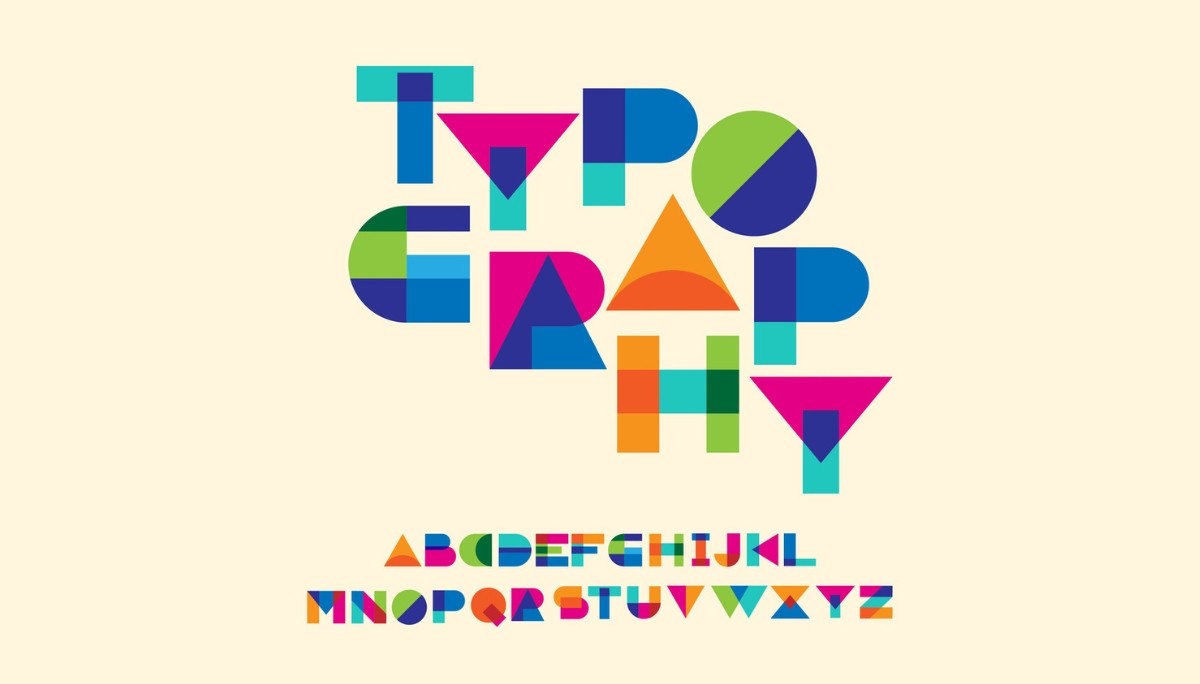What Are Database Models? Types, Examples, and Use Cases Explained
By
Liz Fujiwara
•
Sep 9, 2025
Database models are fundamental frameworks that define how data is organized, stored, and managed within database systems. They provide a structured approach to handling data, ensuring that information can be efficiently accessed, updated, and maintained. A well-designed database model not only optimizes performance but also ensures data integrity, consistency, and scalability across applications.
In this article, we will explore the different types of database models, including relational, hierarchical, network, and document-based models. We will discuss their unique characteristics, advantages, and limitations, and provide practical examples to illustrate how each model is applied in real-world scenarios. By understanding these models, readers can gain insights into selecting the most appropriate database structure for various business and technical needs.
Key Takeaways
Database models are essential blueprints that define the structure and organization of data in database management systems, significantly impacting data management strategies.
The main types of database models are each designed to address specific data needs and use cases.
Relational databases are favored for their structured approach and transactional integrity, while models such as NoSQL and Graph databases are ideal for handling unstructured data and managing complex relationships, respectively.
What Are Database Models?

Database models are the blueprints that define the logical structure of a database schema for data storage and organization. They are foundational to the functioning of database management systems (DBMS), playing a pivotal role in how data is organized, stored, and managed. A database model, including conceptual data models, the document model, and the physical data model, establishes the rules for data storage, access, and updates within a system, ensuring that data management aligns with specific operational needs through effective data modeling.
Choosing the appropriate database model is not just a technical decision but a strategic one. The right model can significantly impact how effectively a business manages and utilizes its data. From relational to hierarchical to graph models, each type of database model addresses different requirements and offers unique advantages. Understanding these models is crucial for optimizing your data management strategy and ensuring your DBMS performs at its best.
Types of Database Models

The world of database models is diverse, with each type offering unique structures and benefits. The main types of database models include:
Hierarchical
Network
Relational
Object-Oriented
Entity-Relationship
Each of these models provides a different approach to organizing and managing data, catering to various business needs and applications.
The database models can be described as follows:
Hierarchical model: Organizes data in a tree-like structure with parent-child relationships, making it ideal for structured data.
Network model: Supports more complex relationships through a graph structure, allowing for many-to-many connections.
Relational model: Stores data in tables with rows and columns, making it highly effective for structured query language (SQL) operations and is perhaps the most widely used.
Entity-Relationship model: Visually represents entities and their relationships, aiding in the conceptual design of databases. This model is particularly useful in the initial stages of database design, offering clarity and ease of understanding.
Each of these models serves distinct needs, from handling complex relationships to providing design clarity, ensuring that there is a model suited for every data management requirement.
Relational Database Model
The Relational Database Model is defined by its use of two-dimensional tables, also known as relations, to store data. Each table consists of rows and columns, where rows represent records and columns represent attributes that define the properties of these records. A crucial element of this model is the primary key, which uniquely identifies each record within a table, ensuring data integrity and efficient access.
In the context of relational databases, the domain refers to the set of permissible values that an attribute can take. The Relational Database Model relies heavily on SQL for querying and managing data. Popular databases like Oracle and MySQL utilize this model, making it a staple in various industries, including banking and finance, where data integrity and transactional accuracy are paramount.
A sample relational database model can be seen in a banking environment, where customer information, account details, and transaction records are maintained in separate but interrelated tables. This model’s structured approach ensures consistency, reliability, and ease of data management.
Advantages and Disadvantages of Relational Database Model
The Relational Database Model offers several advantages, making it a popular choice across industries. Its simplicity and structured approach facilitate efficient data management and querying. The widespread adoption of SQL as a query language further enhances its appeal. This model is particularly effective in environments where data integrity, consistency, and transactional accuracy are critical, including systems utilizing Microsoft SQL Server and other relational database management systems.
However, the Relational Database Model has some drawbacks. A significant limitation is its performance when handling large datasets. As data volumes grow, the efficiency of data retrieval and management can decrease, posing challenges for businesses that require real-time processing and large-scale analytics.
Hierarchical Database Model

The Hierarchical Database Model organizes data in a tree-like structure, establishing parent-child relationships between data elements. This model is highly efficient for scenarios where data follows a clear hierarchical structure, such as organizational charts or inventory systems. A real-world example of a hierarchical database is the Windows registry in Windows XP, where settings and configurations are stored in a nested, hierarchical format.
IBM’s Information Management System (IMS) is another example of a system based on the hierarchical model. Although less common in modern applications, hierarchical databases are still used in legacy systems that require structured data organization, such as book indexes or organizational charts.
Pros and Cons of Hierarchical Database Model
The hierarchical model offers several advantages, including:
Efficient data retrieval and storage due to its organized parent-child relationships.
Effectiveness for applications that require one-to-many relationships.
Quick and reliable access to data.
However, the hierarchical model also has limitations. Its inflexibility in handling many-to-many relationships is a significant drawback. This rigidity can make it challenging to adapt the model to more complex data requirements, limiting its applicability in modern, dynamic data environments.
Network Database Model

The Network Database Model features:
A graph-like structure that supports many-to-many relationships between data elements.
A foundation in mathematical set theory, representing data as sets of related records.
The ability to handle complex interconnections between entities.
This makes it ideal for applications such as telecommunications, where call routing and network topology require intricate data relationships.
Formalized in the 1960s, the Network Database Model has been instrumental in managing complex datasets across various industries. Its flexibility in representing relationships allows for more dynamic data management compared to hierarchical models.
Benefits and Drawbacks of Network Database Model
One of the primary benefits of the network model is its ability to provide faster data access due to the multiple relationships it supports. This model is particularly advantageous in scenarios that require complex relationship management, ensuring efficient data retrieval and updates.
However, the network model’s complexity in implementation and maintenance can be a significant drawback. Its intricate structure requires careful planning and management, making it more challenging to maintain compared to simpler models.
Entity-Relationship Model
The Entity-Relationship (ER) Model is designed to support the conceptual design of databases, providing a clear and intuitive framework for understanding data relationships. This model uses visual representations to depict entities and their relationships, making it easier for users to grasp the structure of a database. Entities are categorized, with attributes defining their properties, allowing for a detailed and organized approach to database design.
The ER model is particularly useful during the initial stages of database design, offering a visual guide for mapping data relationships. Its clarity and ease of use make it a valuable tool for designers and stakeholders alike.
Strengths and Weaknesses of Entity-Relationship Model
One of the key strengths of the ER model is its visual representation, which is often more intuitive for users to understand compared to other models. This makes it an excellent tool for communicating database design concepts to non-technical stakeholders, ensuring that everyone is on the same page.
However, the ER model has limitations. It does not effectively represent all types of relationships, especially complex ones. Additionally, while it serves as a step toward designing a relational database, it lacks features for data manipulation, limiting its functionality in practical applications.
Object-Oriented Database Model
The Object-Oriented Database (OODB) Model represents data as objects, similar to object-oriented programming (OOP). Key aspects of this model include:
Data is stored primarily as objects, allowing for complex data structures and types.
Behaviors and attributes of these objects are defined using classes.
It allows for easier management of intricate data models without relying on multiple tables and joins, showcasing the advantages of the object-oriented approach.
Object-oriented databases are particularly effective in applications that require the storage and manipulation of complex data types, such as multimedia, scientific data, and engineering designs. Their ability to support intricate data relationships and behaviors makes them a powerful tool for various advanced applications, including object database solutions.
Pros and Cons of Object-Oriented Database Model
One of the primary advantages of the object-oriented database model is its support for structured and collection types, providing a rich and flexible data system. Its alignment with the object-oriented paradigm and OOP makes it easier for developers to manage and manipulate complex data.
However, the object-oriented database model is less mature compared to the relational model. This relative immaturity can pose challenges in terms of standardization and widespread adoption, limiting its use in certain applications.
NoSQL Database Model
The NoSQL Database Model is designed to handle unstructured data with flexible schemas, making it highly adaptable to various data types and structures. Key aspects include:
Data is often stored in formats such as JSON strings or key-value pairs, allowing for easy modifications and scalability.
It is particularly effective for big data applications and real-time analytics.
It is well suited for use in content management systems (CMS).
Graph databases, a type of NoSQL technology, enable flexible data organization without requiring changes to existing structures, making them ideal for applications such as social networks and recommendation systems. Hybrid models further enhance flexibility by combining private clouds for sensitive data with public clouds for scalability.
Advantages and Limitations of NoSQL Database Model
NoSQL databases offer significant advantages, including scalability and efficiency in handling large volumes of unstructured data, making them ideal for big data applications. Their flexible schema design allows for easy modifications and adaptability to diverse data requirements.
However, NoSQL databases also have limitations. Their data querying capabilities are often less robust compared to traditional SQL databases. Additionally, the lack of full support for ACID (Atomicity, Consistency, Isolation, Durability) properties can affect data reliability, posing challenges in applications that require high data integrity.
Graph Database Model
The Graph Database Model is based on real-world relationships, represented using nodes and edges. This model excels at handling complex relationships, making it ideal for applications such as social networks, recommendation systems, and fraud detection. A popular example of a graph database is Neo4j, known for its efficiency in managing intricate data connections.
While graph databases are highly effective for managing complex relationships, they may not be the best fit for simpler data requirements. Their strength lies in representing and querying intricate data relationships efficiently.
Benefits and Challenges of Graph Database Model
Graph databases offer significant benefits, including efficient query performance and support for complex relationships. This makes them particularly advantageous for use cases that require deep integration of data connections, such as social networks and recommendation systems.
However, managing graph databases can be challenging. Accurate and consistent data is crucial, as inaccuracies can lead to unreliable query results. To mitigate these challenges, best practices recommend starting with simple queries to improve clarity and focus on results within the database task group.
Hybrid Database Models

Hybrid Database Models combine features from multiple database models to leverage their strengths for specific applications. For instance, the Object-Relational Database Model:
Merges aspects of relational and object-oriented databases
Provides the robustness of relational data management
Offers the flexibility of object-oriented structures
This combination allows businesses to handle diverse data types and requirements efficiently.
The Context Model is another example, integrating elements from object-oriented, semi-structured, network, and semantic models. By incorporating features from different models, hybrid databases offer a versatile solution for complex data management needs, ensuring performance, security, and cost efficiency.
Examples of Hybrid Database Models
Hybrid database models are particularly useful in scenarios requiring a blend of performance, security, and cost efficiency, such as e-commerce during peak seasons. A common example is a system that combines relational and document-based storage to cater to varied data access patterns. This hybrid approach ensures that different types of data can be managed effectively within a single system.
Another example is the Document-Relational Database, which merges document storage with relational capabilities. Additionally, Object-Relational Mapping (ORM) facilitates interaction between object-oriented programming languages and relational databases, providing a seamless data management solution.
Use Cases and Examples of Database Models
In the finance sector, relational databases are commonly employed to ensure data integrity and manage transactions effectively. Their structured approach and support for SQL operations make them ideal in environments where data consistency and reliability are paramount. Similarly, hierarchical databases are often used in inventory management systems due to their clear parent-child data organization.
NoSQL databases are favored in social media applications for their ability to handle diverse and rapidly changing user-generated content. These databases can process large volumes of data quickly, making them suitable for high-speed applications.
Graph databases excel in e-commerce settings by managing relationships between customers and products for personalized recommendations. They enable similarity searches, helping businesses suggest products based on user behavior.
Hybrid databases play a crucial role in ensuring business continuity by allocating critical operations to multiple cloud environments, enhancing disaster recovery, and implementing robust security mechanisms. Development environments also benefit from hybrid models by providing access to powerful tools in the public cloud while safeguarding sensitive data in private clouds.
These examples highlight how different database models cater to specific industry needs, optimizing data management and operational efficiency.
How Fonzi Facilitates Efficient Hiring for AI Engineers
Fonzi revolutionizes the hiring process by connecting companies with pre-screened AI engineers through structured hiring events known as Match Day. During these events, companies can make real-time, salary-backed offers to candidates within 48 hours, expediting hiring decisions that are typically completed in less than three weeks. The platform employs bias-audited evaluations to ensure fair assessments, promoting diversity while maintaining consistency and scalability. Designed to benefit both early-stage startups and large enterprises, Fonzi provides a curated marketplace of highly qualified, motivated candidates, ensuring companies engage with serious applicants. By streamlining recruitment and delivering high-signal evaluations, Fonzi sets a new standard for hiring elite AI engineers.
Summary
Database models define how data is stored, organized, and managed in systems, with types such as relational, hierarchical, network, entity-relationship, object-oriented, NoSQL, graph, and hybrid models. Each serves different needs, from ensuring transactional accuracy to handling unstructured big data, making them essential for industries like finance, telecommunications, and social media while also supporting emerging applications such as real-time analytics and AI-driven processes.




